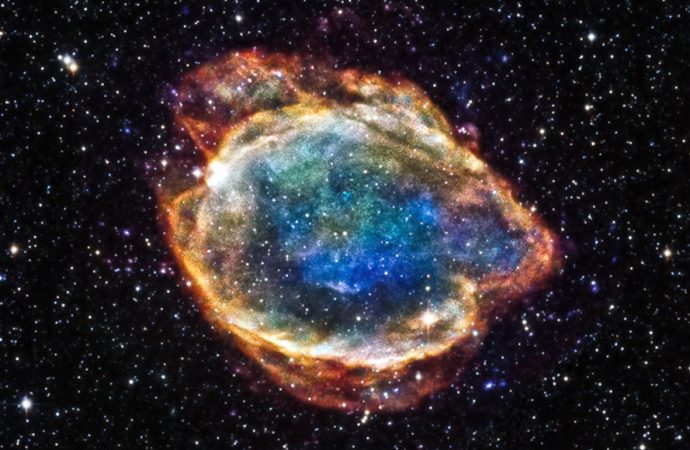A new study leaves the puzzle of the Hubble constant unresolved
Source: Science News
It’s one of the most talked-about issues in physics: Two measurements of the universe’s expansion rate disagree. Now, a technique that aimed to resolve the mismatch has produced a third estimate that falls between the previous two. So the controversy endures, scientists report in a study accepted in the Astrophysical Journal.
One measurement of how fast the universe is expanding — a number known as the Hubble constant — comes from supernovas, or exploding stars. Another is based on the cosmic microwave background, the light released shortly after the Big Bang. Previous supernova measurements indicate that the universe is expanding at a rate of about 74 kilometers per second per megaparsec, or about 3.3 million light-years. But the cosmic microwave background pegs that number at around 67 kilometers per second per megaparsec.
That difference has led some researchers to suggest that we’re missing something important in our understanding of the universe, such as new, unidentified subatomic particles that might inhabit the cosmos.
In the new study, cosmologist Wendy Freedman of the University of Chicago and colleagues made another measurement of the Hubble constant that also relies on supernovas. Scientists determine how fast the universe is expanding by measuring how the supernovas’ light is stretched to redder wavelengths by that expansion. But that requires an estimate of how far away those supernovas are from Earth.

Freedman and colleagues used a different, independent technique to help gauge the supernovas’ distances. Supernovas of a variety known as type 1a supernovas have a known brightness. Using a “distance ladder,” that relies on other, nearby objects with known brightness, scientists can work out the distances of the supernovas. Previous distance ladders had relied on variable stars called Cepheids, but the new work used red giant stars, which reach a uniform peak brightness.
The new Hubble constant measurement is a bit lower than the previous supernova estimates, about 70 kilometers per second per megaparsec, in better agreement with the cosmic microwave background estimate. The team reported the result July 16 in a presentation at the Kavli Institute for Theoretical Physics at the University of California, Santa Barbara.
Cosmologist Adam Riess of Johns Hopkins University and the Space Telescope Science Institute in Baltimore suggests that the lower estimate comes down to how the team accounted for dust, which obscures stars and affects their brightness. “Dust is the bane of astronomy,” says Riess, who led the previous supernova estimate.
It’s still not clear whether something is amiss with one of the various Hubble constant measurements, or with our understanding of the cosmos. “What these results are telling us is — hey, wait a minute, we need to understand some of these differences” before getting too excited, Freedman says. “Not so fast with the new physics.”

































Leave a Comment
You must be logged in to post a comment.